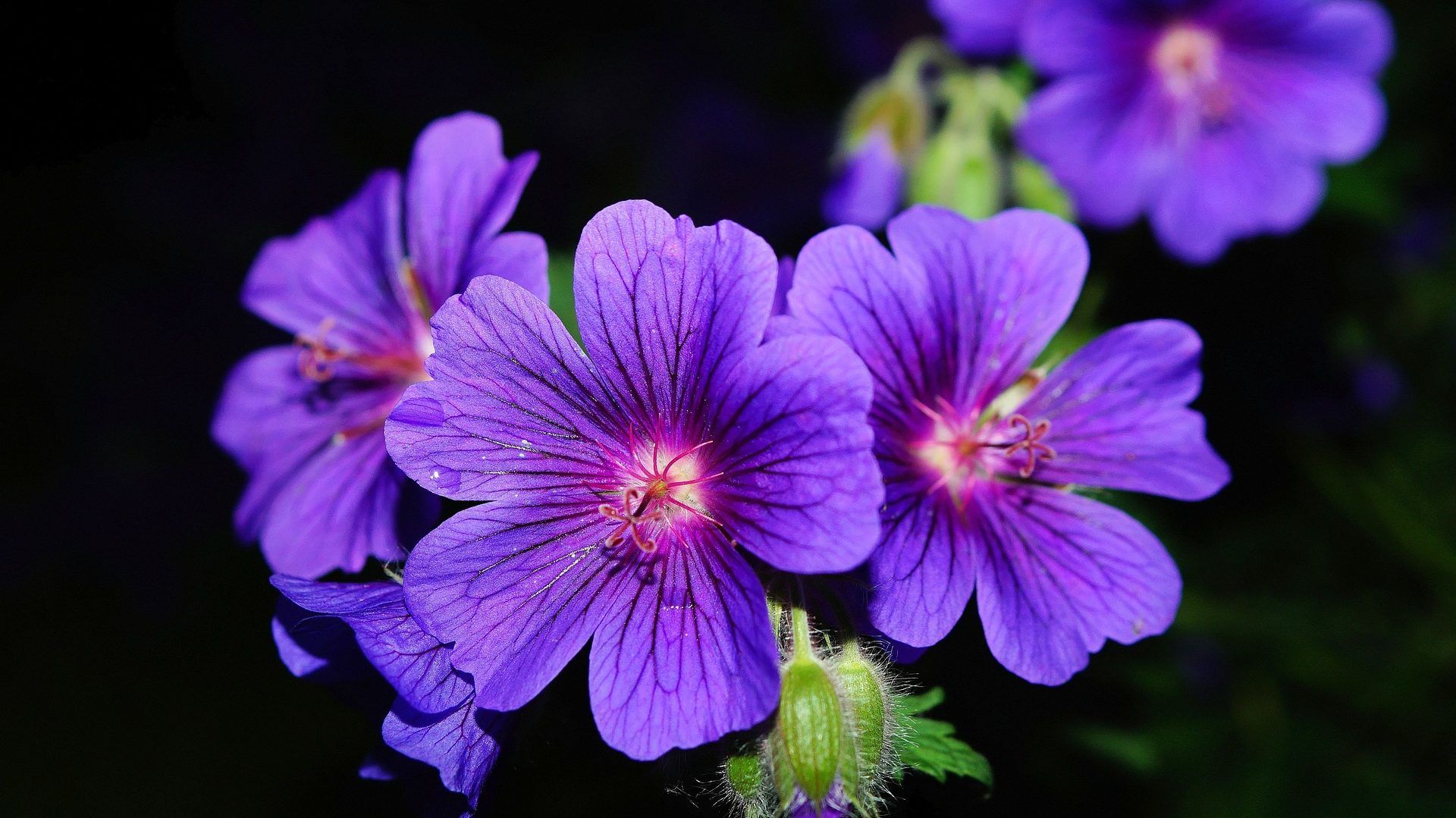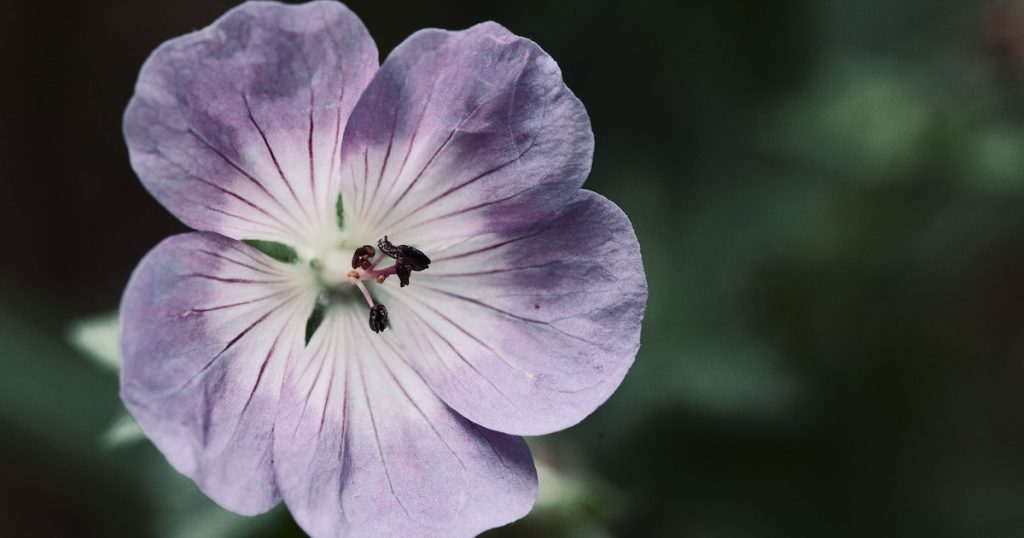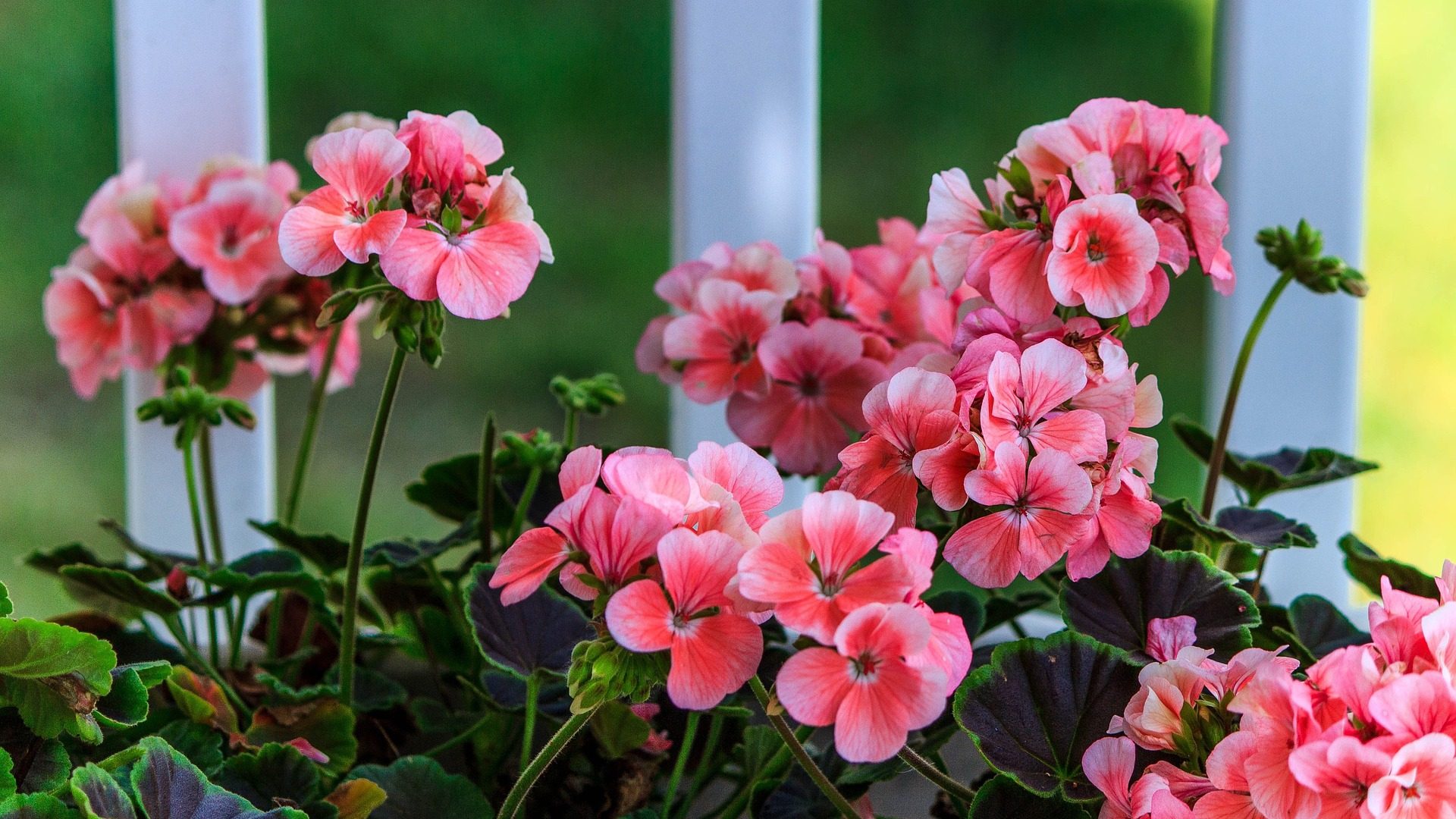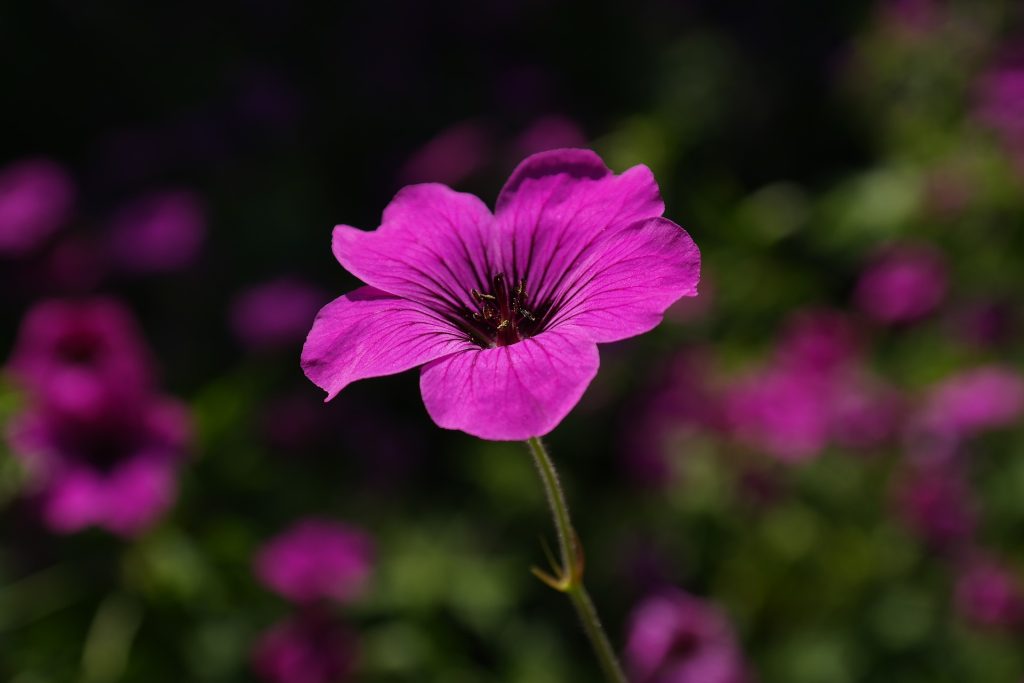There are many varieties of geraniums, and all of them are desirably planted by many gardeners and plant lovers around the globe. Geraniums require care like any other plant and regular watering, but sometimes this can lead to issues such as overwatering. You may have confronted this problem, and now you are looking for signs to make sure that your geraniums are overwatered before you take any further measures.
The most common sign of overwatered geraniums is edema; this is when roots take up more water than they can utilize. Further problems such as wilting and falling leaves, yellow or brown leaves, slow growth, fungal infections, and sloppy steps are also one of the many signs that your geraniums are overwatered.
It might be difficult to determine whether you are giving your geraniums enough water and whether they have a sickness of any type. Still, through this article, you will recognize the problem and learn how and when to water your geraniums.

Table of Contents
How Do You Know If Your Geraniums Are Overwatered
Sometimes, you can confront issues while growing any plants, including geraniums. One of these issues is overwatering. However, you may not be able to realize whether you are overwatering your geraniums. Here is a list compiled by us so that you can determine if you are overwatering your geraniums:
1. Plant Oedema
Oedema or Edema is one of the first signs that your geraniums are overwatered. Edema causes water pressure to build in the leaf cells when a plant’s roots take up more water than they can utilize. This will lead to the cells bursting, which will eventually kill them and cause blisters that resemble lesions.
When the blisters burst, white or brown scars start to grow on the former blister places. On the top surfaces of the leaves, you will also notice pits or bulges developing directly above the scars. Vegetable crops produced in fields are also affected by this disorder in specific environmental situations.
2. Wilting and Falling Leaves
A plant with root rot, which prevents it from absorbing water through its roots, would likely wilt even though its potting soil is moist. As a result, a plant may appear thirsty when its soil is excessively wet.
Both scenarios of too much and too little water result in leaf fall. When buds don’t develop, and both new and old leaves fall off before they should, there is definitely too much water in the soil.

3. Leaves Turning Yellow
Overwatered plants may show their discontent by growing pale. The lowest and oldest leaves normally start to yellow first before eventually falling off.
However, a nutrient deficit might also be to blame for yellowing foliage. Don’t instinctively assume that a color change or fallen leaves indicate overwatering because certain plants normally shed lower leaves as they mature.
4. Slow Growth
Another sign is slow, slowed growth followed by fading leaves. This symptom is frequently accompanied by leaves coming off. You are overwatering your plants if they have old, yellowing leaves as well as fresh leaves that are falling off at the same rapid rate.
5. Leaves Turning Brown
If your plant’s leaves are turning brown, it could be due to too much or too little moisture. If this color appears only on the tips or edges of the leaves, it is most likely a sign of overwatering but also underwatering, low humidity, or overfertilization. However, when plants begin to rot, their leaves may turn brown and fall off.
The main difference between overwatering and underwatering is that too little water causes your plant’s leaves to feel dry and crispy to the touch, whereas too much water causes soft and limp leaves. Overwatering is also frequently indicated by smudges in the middle of the leaves.
6. Sloppy Stems
Sloppy stems can also be a sign of overwatering since root rot gradually moves up from the buried roots to the exposed shoots. If you notice that the steps of your geranium are losing their firmness and turning over, it is a sign that you may be overwatering your plant.
7. Leaves Turning Black From Fungal Infection
If the leaves of your geranium are turning black, it may be a sign that there is a fungal infection and your plant is infested with bothersome parasites like gnats. Examine the leaves and stems that are closest to the soil to see if a fungal infection is the likely source of the discoloration. Fungal infections frequently start in the soil and then spread to the rest of the plant. This can be caused by overwatering your plants.
This is because pests such as fungus gnats prefer moist potting mix soil. If you see bugs hovering about your plants, you may be overwatering your geranium. They move around and crawl over that soil, somewhat resembling fruit flies.
These pests lay eggs that develop into larvae, which can eat the tiniest roots of the plant. Before you water your plant again, let the soil’s surface dry off to deter these insects.
To stop the spread of fungus infections, immediate treatment is required. If your geraniums have fungus, cut away the afflicted portions and use a fungicide to stop the fungus from returning.

How To Save Overwatered Geraniums
Any plant, even geraniums, can develop stem and root rot due to overwatering. When geraniums develop rot, which shows up as black, withered stems and roots, they can occasionally be rescued. The plant may not be recoverable if discovered too late, but if it is more green than black, it has a good chance of doing so. Regularly inspect your geraniums; if you notice any dark leaves, this may be a sign of stem rot or another fungal issue.
Step 1: Remove the Dead Sections
Remove the dead sections of the geranium plant from the ground or pot, cure the stem or root rot, and then let the soil rest and air dry until it is just a little damp. Remove the soil from the geranium’s root ball with a brush, and then throw it away. Get a new pot with drainage holes so that the plant can heal in a new environment. A healthy geranium plant needs good drainage.
Step 2: Use Fungicidal Powder
Dust the geranium roots with a quality fungicidal powder before replanting. Replant it in the new pot with fresh soil that drains nicely afterward. At first, keep your healing geranium in a shaded spot and water it only when the soil seems dry. Move it into the sun or replant it in your garden as it produces leaves once more.
Step 3: Ensure Adequate Drainage
Make sure your pot has adequate drainage, and add more space around the roots if you can. The root zone will be able to receive oxygen as a result. Keep just the healthy roots and cut off any dead or dying ones.
If overwatering causes rust under the yellow leaves, make sure to remove the leaves as soon as possible if the rust appears later. After that, you can apply a fungicide to the plant to treat the disease, which should be eradicated. To protect surrounding plants from the same issue, it can be necessary to remove a severely afflicted plant.
If the soil is too moist and you have some of the conditions listed above, it’s time to cut back on your watering. In addition, several businesses sell low-cost, accurate moisture meters. Simply place them into the root ball to determine the amount of water in the soil. This simple and low-cost instrument will eliminate most of the guesswork in watering your environment.
When and How To Water Your Geraniums
The answer to when to water geranium plants relies on a number of things. It depends on whether the geranium plant is in a container or in the ground, if it is in direct sunlight, and if it gets a sufficient amount of this sunlight. It also depends on the weather, and where you keep your geranium.
Here’s a video that will help you in taking proper care of your geraniums:
In general, checking the top half-inch of soil for wetness is the best approach to estimate how frequently to water your geranium plant. As a general guideline, if it’s dried out, water the geranium plant. There’s no need to water the geranium plant if it’s still damp or moist in the top half-inch.
The following factors determine how much water your geraniums need:
- Weather is the biggest factor. Spring weather generally drives more rain than in certain locations; you may not need to water your geranium plant as frequently. When there is a lot of rain, be careful not to overwater your geranium plant.
- Most geranium plants thrive in broad sunshine, but in the summer heat, keep these plants properly hydrated. Geranium plants planted in full sun will dry up quickly, especially if they receive direct sunshine during the day. Keeping the geranium plant adequately watered throughout these seasons assures that it will be able to generate healthy new geranium shoots in the future.
- Vice versa to the previous point, too less sunshine can cause your geranium to lack proper nutrition. Also, if you overwater the plant, there won’t be enough sunshine to dry up the water.
- You also may not need to water your geranium plant as frequently depending on the season. When the geranium plant is more established in the fall and the temperature cools, you may only need to water it once a week. Otherwise, the overwatering will cause damage to your geranium.
- If you have geranium plants planted close together, they will grow even closer together and may fight for the same water, requiring you to water them more frequently.

If you are watering geranium seedlings, you want to ensure you provide your young geranium plant with the water it needs for early growth and that overwatering does not damage the seedlings.
Geranium plant seedlings are sometimes cultivated in groups. These may absorb moisture more quickly, so keep an eye on the soil moisture for these seedlings. However, watering them gently more regularly is preferable to watering them seldom.
When seedlings are overwatered, they are more prone to “drowning.” Too much water at once can cause the plant to uproot itself since dirt washes away more easily when it lacks a firm root structure. On the other hand, mature geranium plants don’t require as much water.
So, water your geranium seedlings every several days. Watering them every day can also work. Keep an eye on the surface level dryness of the soil and spray the seedlings if it doesn’t appear moist.
Watering geraniums early in the morning ensures that your plants stay hydrated throughout the day. This is significant since a hot day followed by a chilly night might result in issues such as leaf fungus. It also gives any moisture remaining on the leaves a chance to dry before the night.
Watering your geranium in the evening is also fine, but only occasionally. You should not schedule your watering for the evenings. Watering in the evening keeps the soil wet for longer than watering in the morning.
This may not be a negative thing in particularly dry areas. Still, certain geraniums may not appreciate the long hours of excessive wetness, and this can lead to damage from overwatering. Watering your geraniums around midday is not a good idea since the sun will absorb all of the moisture and dry up your soil. Your soil may be in danger of developing fungal issues.
Final Words
Although geraniums are not difficult-to-grow plants, there are some measures that you should be careful of, such as how you water your geranium. You can also revive your overwatered geranium if you recognize the problem before it is too late.
To prevent this problem from occurring in the future, you can use this guide to determine when and how you should water your geraniums.
Recent Posts
Have you found yourself wondering, 'why is my bamboo growing so slow?' Despite the fact that bamboo plants are remarkably fast-growing, it can sometimes take months (or even years!) to see any signs...
Miracle-Gro is a huge help when you are trying to get decent yields out of your plants or if you want them to thrive. However, you may have noticed that a single dose of fertilizer does little to...
